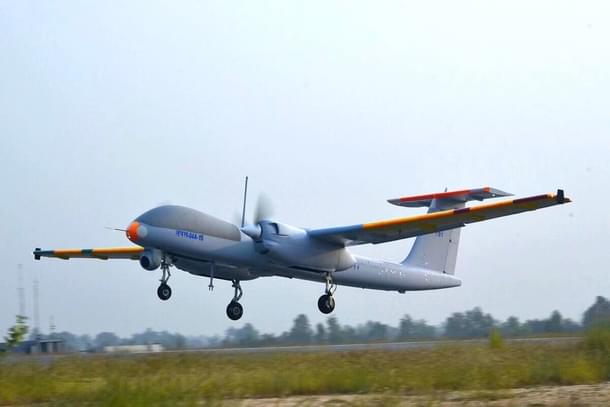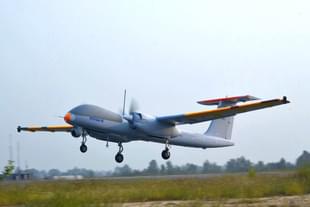Defence
Made-In-India Tapas UAV Crashes During Trials In Karnataka
Ujjwal Shrotryia
Aug 20, 2023, 12:35 PM | Updated 12:53 PM IST
Save & read from anywhere!
Bookmark stories for easy access on any device or the Swarajya app.


In an unfortunate incident, the indigenous Tapas medium-altitude long-endurance unmanned aerial vehicle (UAV) crashed today (20 August) near a village in Karnataka.
The Tapas UAV is being developed by the Aeronautical Development Establishment (ADE), a Defence Research and Development Organisation (DRDO) lab for the Indian Armed Forces.
The Tapas UAV developed by ADE, according to a tweet by PTI, crashed near Chitradurga in Vaddikere village, located in the Hiriyur taluk of Karnataka.
VIDEO | An unmanned aerial vehicle (UAV) belonging to the Defence Research and Development Organisation (DRDO) crashed during a trial in an agriculture field in Chitradurga district of Karnataka earlier today.
— Press Trust of India (@PTI_News) August 20, 2023
(Source: Third Party) pic.twitter.com/KB5A7NjvTm
An inquiry has been ordered by the DRDO to ascertain the causes of the crash.
The crashed UAV had the prototype serial number 017A-14 and was one of the six prototypes of the UAV under testing.
Earlier, in September 2019, another prototype of the UAV crashed in Chitradurga, as well.
The UAV is capable of flying for more than 18 hours at an altitude of 28,000 feet.
It is also capable of carrying various electronic intelligence, communication intelligence, and intelligence, surveillance, and reconnaissance payloads, allowing the UAV to monitor enemy movements for an extended period of time.
The Indian Armed Forces have shown willingness to initially acquire 76 production variants of Tapas. The Indian Army will operate 60, the IAF will operate 12, and the Indian Navy will operate four.
Just a month ago, on 27 June, Tapas achieved a significant milestone by completing its 200th flight, showcasing its capabilities to a tri-services team for the first time.
The flight took off from ADE's advanced testing range in Chitradurga, situated in Karnataka.
The DRDO has announced after the flight that the UAV is now ready for user evaluation trials. According to a report by the news agency Reuters, the user trials are scheduled to begin in the month of August.
These trials will allow the Indian Armed Forces to thoroughly assess its capabilities in real-world scenarios.
The successful 200th flight followed yet another achievement of the UAV, where it showcased its ability to transfer its command and control from a land-based ground control station (GCS) to a distant GCS located 148 kilometre away at the Karwar naval base, onboard an Indian Navy ship INS Subhadra.
Staff Writer at Swarajya. Writes on Indian Military and Defence.





